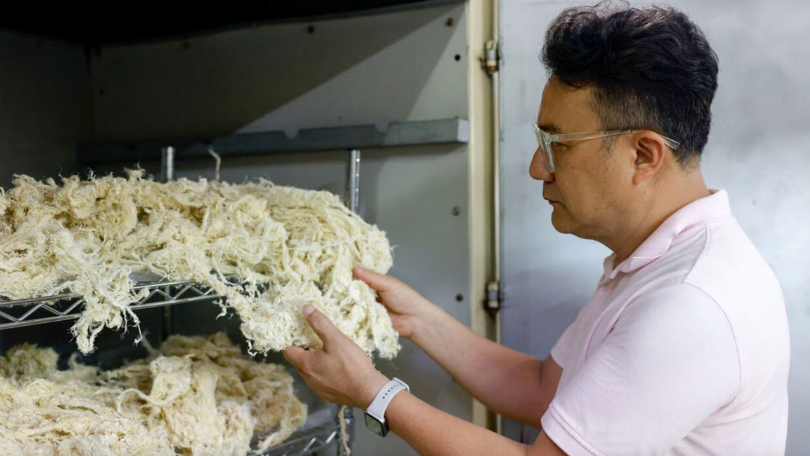A Taiwanese entrepreneur is reviving a forgotten part of the island’s agricultural heritage by transforming banana plants into textiles.
The country was once known as the ‘banana kingdom’. Under Japanese rule from 1895 to 1945, the island’s bananas and pineapples were major exports.
Fast forward to today, Nelson Yang, founder of Farm to Material in Changhua County, is developing ways to turn banana fibres into fabric.
“Back in 2008, European sneaker brands told us they were hoping to find a way for food and materials to be produced in parallel, meaning both come from the same land,” Yang told Reuters.
“What we’re doing now is making sure that all our material sources come from food or leftovers from agriculture or the food industry. We then transform those leftovers into usable materials.”
Yang’s company collects the middle part of the banana plant – the pseudostem – which is usually discarded after harvest. The stems are then crushed and dried to extract strong natural fibres that can be spun into yarn, blended with cotton for socks, or even turned into vegan leather.
While Farm to Material is still in its early stages, the potential of banana fibre has drawn attention from Taiwan’s textile industry.
“Banana fibre actually performs better than regular cotton in terms of water consumption, absorbency, and supply stability, making it highly promising for future applications,” said Charlotte Chiang, director of the Innovation and Sustainable Design Department at the Taiwan Textile Federation.
With the world searching for alternatives to resource-intensive materials, Yang’s work could mark a new chapter for both agriculture and sustainable fashion, proving that innovation can indeed grow from the ground up.


